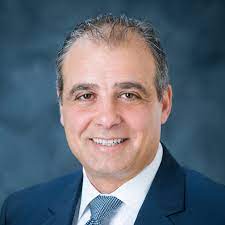Mississippi’s prison system has been engulfed in violence for more than a week. State corrections officials have imposed a state lockdown, and a county coroner declared that prison gangs are engaged in a war against one another. The Mississippi State Penitentiary, Parchman, is at the heart of all the chaos — it’s one of America’s most notorious prisons. Seven prisoners were killed by their fellow inmates in this facility, which is considered to be the state’s most secure. This is compared to the four prisoner killings that occurred in the previous eight years. According to an investigation by ProPublica and the Mississippi Center for Investigative reporting, the current violence is the result of years of neglect by state officials. They allowed Parchman’s conditions to deteriorate after federal courts removed oversight in 2011. According to inmates, prison gangs control contraband drugs, weapons, food, and bedding. The most dangerous inmates are identified by their red-and white striped uniforms. They can be seen walking around their cells without guards. Inmates cheering and shouting at each other in a video purporting that it shows the Jan. 3 murder of Parchman inmate. The investigation revealed that Parchman’s descent put at risk the safety and security of corrections officers as well as the investment of hundreds upon millions of dollars in Mississippi taxpayer funds. It also puts at risk the health of inmates that the state is responsible for protecting. Last year, hundreds of guard positions were not filled by corrections officials. Terrence Shaw, a correctional officer, wrote to the Mississippi Center for Investigative reporting on Sept. 6, detailing how dangerous it was to work in Unit 29 Parchman’s maximum security unit. He wrote that a building in Unit 29 that should have at most five officers only had two. Some buildings only had one. Shaw wrote that the National Guard army should have been called into service several years ago. “Staff morale has fallen, and staff are quitting from all sides.” “All staff should be paid a living wage.” Experts and inmates agree that the prison’s state of disrepair is a major factor in the violence. Water, lights, and sewage facilities are all in disrepair. Documents show that the prison’s drinking water has been cited by the Environmental Protection Agency for violating the Clean Water Act for three consecutive years. The American Correctional Association, which sets standards across all prisons in the country, has revoked Parchman’s accreditation. Alger Retherford was convicted of murder and robbery in Parchman. He spent over four decades behind bars. He was a member of Parchman’s repair crew and was released in May. Retherford, 62, said that “we have come full circle” and that they had the same conditions back in 1975. In response to the violence, Mississippi’s top prison official, Corrections Commissioner Pelicia Hall said she was working with sheriffs, private prison operators and others to make sure the prisons are as safe as possible, and she vowed that MDOC would pursue criminal charges “to the full extent of the law.” Hall has also repeatedly asked the Republican-controlled Legislature for more money to hire guards and to fix up Unit 29, which replaced a different maximum-security unit that was closed down in 2010 in response to litigation filed by the ACLU. This request was denied. Hall requested $78 million more funding this year to renovate Unit 29. This was even before the violence began. Grace Fisher, a spokesperson for the Mississippi Department of Corrections (or MDOC), stated last month that Unit 29 is “unsafe for staff and inmates due to age and general decay.” The Joint Legislative Budget Committee is the body that sets state spending priorities and recommends that legislators reject the request to reduce the corrections budget by $8.3million. The new Mississippi Legislature was sworn into office Tuesday. David Fathi, the director of ACLU’s National Prison Project said that it would be easy for people to dismiss what is going on as a Mississippi story. He said that it is an American story. He said that federal courts have intervened in states with prisons suffering from high levels of violence and lack of proper treatment. But when this oversight is removed, the conditions only get worse. He said, “State officials complain against federal court, however that seems to be a way to maintain basic decency.” Fathi said that he has no doubt the Parchman conditions are illegal. “There is no place for such treatment in civilized society,” Fathi stated. “Unfit For Human Habitation” Parchman prison was opened in 1901. The prison held a few hundred inmates who lived in small cells and worked in nearby plantation farms from sunup to sunset. The state of Mississippi had a harvest of $185,000 each year by 1905. This was the modern equivalent of over $5 million. The system of discipline was notorious. The disciplinary system was notorious. Parchman inmates brought a class action lawsuit in 1971. U.S. District Judge William Keady ruled that Parchman inmates had committed “inhumanities,” “illegal conduct” and other indiginities to corrupt the trusty system. He also found that inmates’ quarters “unfit for humanhabitation” and that they were deprived of basic hygiene, food and medical treatment. He demanded improvements in prisoner health care and nearly every aspect of prisoner lives. This landmark decision ended the South’s trusty system. Keady remained in charge of the prison, occasionally showing up at it unannounced over the years. Mississippi spent over $35 million to modernize Parchman. It replaced the work camps with more buildings that were surrounded by razorwire. Slowly, the reforms took effect. The American Correctional Association certified in 2003 that Parchman was compliant with modern prison operating standards. Parchman’s Unit 32, a notorious supermax unit with a violent past, was closed down by prison officials in response to ACLU litigation. A federal judge ruled that it had unconstitutional conditions. The prison had made a significant improvement by 2011. New facilities were built after nearly 40 years of court supervision and an injection of taxpayer money. Prisoner abuse had declined. A judge lifted federal oversight and Mississippi was again given the responsibility for its inmates’ care. Ronald Welch, a Jackson attorney who represented the state’s prisoners before the courts for a lot of the time, said that “we felt like it was mission accomplished.” Chris Epps was the corrections commissioner of the time, and was a champion for prison reform three years later. Epps, a former Parchman Guard who was president of the ACA in 2017, pleaded guilty to the charges and is currently serving almost 20 years in prison. Robert Reeves (a certified ACA auditor and former manager at South Mississippi Correctional Institution) said that the facility had failed to meet basic industry standards by 2017, after Parchman’s accreditation was revoked. Reeves, who retired from MDOC in 2016, continues to communicate with MDOC staff. He stated that staff are unable to maintain the facility’s repairs. The gap has not been filled by outside contractors, which were hired by MDOC. Reeves stated that Mississippi’s corrections facilities are in “so bad shape”. Welch, a lawyer who has been monitoring Parchman for 36-years, stated that the latest report and photos show conditions far worse than they were before the federal court discontinued monitoring. He said that if Parchman’s problems were in any other public building than a prison it would be closed down. J. Cliff Johnson, director of the University of Mississippi MacArthur Justice Center, referred to the prison’s conditions as an “unbelievable nightmare”. He regularly visits the prison. Johnson stated that Parchman was held together by bubble gum and baling wire. We placed Parchman facilities in the middle of nowhere to make sure people don’t think about the inhumane treatment or the human beings inside. It’s not something we want to hear. It’s not something we want to see. We don’t want it to be there.” “Quitting Right and Left” MDOC employed 1,591 correctional officials in 2014. While the state prison population has declined slightly, 731 correctional officers have been hired. This is more than half of the workforce. Parchman cannot fill the vacant positions. The prison was authorized to hire 512 officers this year but only 261. This figure is well below ACA accreditation standards. Correctional staff who directly work with inmates must have a minimum of 10% vacancy rate for 18 months. Hall plans to resign in mid-January as corrections commissioner. He blames the high number of job openings for low salaries. MDOC asked the Legislature for an increase in starting pay rates, from $25,650 per year to $30,640, at a cost $2.79million. The Joint Legislative Budget Committee recommended that this proposal be rejected. Inmate deaths due to unnatural causes have increased in tandem with a shortage of staff. Parchman reports about two suicides per annum on average. According to the office of the coroner, five Parchman prisoners committed suicide in 2019 while being held in single-person cells. Experts say that suicide rates rise when inmates are kept in isolation and fail to monitor them regularly. Fathi stated that in many prisons, the majority of suicides are committed in solitary confinement. However, prisoners in solitary make up a very small percentage of the prison population. According to the coroner, seven inmates were murdered by their fellow inmates in the period January 2013 through March 2018. One prisoner was murdered on average every 19 months between 2011 and 2018. According to the coroner, Jeffery Allen, 40 was killed in the shower on July 10. Samuel Wade, 27, was murdered less than a month later. Jeremy Irons (31), was fatally stabbed to death by fellow inmates just before midnight on November 12. According to inmates, the death occurred after an argument about a $40 debt. According to the coroner, Michael Anderson, 26, was serving a 10-year sentence in armed robbery. He was then fatally stabbed and killed by other prisoners on Nov. 19. Robert Coleman, Anderson’s father, stated that his son shared with him that a prison gang wanted him to do “something that he didn’t do” and that his “brothers” weren’t protecting him anymore. Since the beginning of the new year, three more homicides occurred. According to prison experts, prison gangs have replaced the old armed trusties as a factor in the rising number of deaths. Johnson of the University of Mississippi MacArthur Justice Center, who represents many Parchman prisoners, said that correctional officers are telling him that gang leaders make decisions about who is housed. “When people get out of line, the severe, Gang disciplinary system rules,” said Travis Arnold, who was sentenced to five-years in prison for statutory rape. He also failed to register as an sex offender. This fear became a reality in Parchman, Mississippi, when a gang war broke out between the Vice Lords (the Gangsters) and Parchman prisons. It began Dec. 29. Parchman officials reopened Unit 32, which was closed under federal consent decree in 2010. This attempt to stop violence has been made. Parchman officials reopened Unit 32, which had been closed in 2010 under federal consent decree. The video shows standing water, mold and peeling paint, as well as cells without running water. Fathi stated that this is a sign of one of the flaws of litigation. Defendants can then return to their old ways unless a new lawsuit has been filed. Social media video purports that it shows the Jan. 3 murder of an inmate. ProPublica was unable to verify the authenticity of this video with prison officials. Although cell phones are banned by law, inmates have access to them all. Many inmates who were contacted claimed that the video showed Parchman’s inside. Details in the video also match the coroner’s account of the circumstances surrounding the death of an inmate. The video shows an inmate standing in a cell wearing the red-and-white trousers worn by the most dangerous prisoners. An inmate strikes another prisoner repeatedly with his fists. An unnamed prisoner can be heard shouting loudly while narrating the video. “They’re straight down hitting the m—f—ers with knives, s—-, beating them up m—f—ers up. They are behind the cell, while we’re locked down.” A woman can then be heard shouting, possibly from a cell phone. “They’re straight up hitting the m—f–ers with knives and s—, beating them m—f-ers up.” Another prisoner cheers him on: “Oh, yeah. Oh, yeah. Dead. Oh, yeah. Dead. Deaaaaaaaad.” No officer could be seen responding to the shouting during the incident. At 3:20 a.m. Denorris Howell was declared dead by a doctor. Authorities initially believed that Howell had been stabbed to death in the hands of his roommate. Heather Burton, Sunflower County Coroner, later found that Howell had suffered a fatal neck injury. The bloodstains on his clothes were also the result of the attack. MDOC officials declined to comment and no charges have been brought against Howell. Johnson described the video as “the stuff dystopian nightmares.” Johnson stated that the video was “the stuff of despair.” Johnson also said that MDOC officials have declined to comment. “Events such as this one are horrendous not only because the killers’ depraved behavior, but also because Mississippians have allowed it to happen and even encouraged it,” Johnson said. The increasing poverty in Parchman was evident from prisoners who were part of the Dark Mississippi Department of Health inspections over the past decade. Six Parchman inmates were without bedding or mattresses in 2012, one year after federal oversight was ended. More than 250 prisoners had this problem last year — almost 8 percent of the prison population. A dozen prison toilets didn’t function in 2012 There were 64 toilets last year. These reports show holes in prison walls and prison doors, collapsing ceilings, broken commodes, sinks and tiles, exposed wiring, and roaches throughout the prison. One report shows birds eating from the food trays of inmates. Unit 29, which is the highest security building, was under special scrutiny. The roof of Unit 29, which is home to death row prisoners, has holes that allow rain to enter the facility. The locks and doors are broken. Corrections officials acknowledged that inmates dug holes in the concrete slab, which was unreinforced, large enough for them to conceal contraband drugs, weapons and phones. Interviews, documents, and photos from Parchman prisoners and their families back up the official reports. Some prisoner claimed that they washed their prison uniforms in the toilet after the laundry service had stopped. One prisoner claimed that he made his own extension cords out of stripped wires. He used them to heat water and start fires. Many Parchman inmates live in darkness today. At least 300 cells are without power or lights, according to the latest inspection. This is a stark contrast with 2012, when there was no need for power or lights in these cells. James Louis Manning was released from Pa
After serving his sentence for grand larceny in June, rchman stated that he didn’t have any light in his cell in his last year as a prisoner. He said, “It wasn’t fixed before my departure.” According to Eldon Vail (ex-corrections secretary in Washington), lack of light can lead to serious consequences in prisons. To ensure safety, officers can’t inspect prisoners. Long periods of darkness can lead to stress and worsen mental illness. Many of Parchman’s dayrooms are darkened, which can lead to stress and mental illness. Vail asked, “What officer would go into a dayroom where prisoners are out of their cells with no lights?” At least 43 locations were found to have electrical wires exposed. This makes it possible for inmates set fires and cause other damage. Inspections also revealed live wires around water fountains and showers. Percy Dean III was sentenced to an 11-year prison term for forgery. Experts say that the dangers are abound because of “live wiring hanging over and under the steel beds inmates must sleep in.” Parchman’s water system and sewer system have been found to be creating dangerous health conditions. According to the most recent reports, there are now 59 non-functioning sinks. This is up from five in 2012. One building only had one working shower that could accommodate more than 50 prisoners. MDOC policy requires that each inmate receive three showers per week. However, some inmates have described going several weeks without being able to wash their hands. Manning claimed that he took five showers in a month, with three more in a single week. The federal court monitoring has ended in 2011. Since then, the Health Department issued almost 100 major violations to Parchman of the Safe Drinking Water Act. They found multiple toxic contaminants in the water. Safety scores for water treatment fell from 3.5 out 5 in 2015 to just 0.5 in 2019. Online images have been posted by inmates showing brownish or opaque water flowing from their cells’ taps. Retherford, a former inmate, was released in May. He said that he and others who drank the water were “constantly getting stomach ailments.” Fisher declined to comment on environmental and health inspections that revealed deficiencies. Fisher downplayed the issue of discolored water and stated that MDOC had addressed them as soon as they were reported. She said that brown water is “coming out of my faucets in Jackson and the Delta.” Alton Cobb, a former State Health Officer, was horrified by Parchman’s squalid conditions. He said, “If the state cannot afford to provide reasonable hygiene for inmates that is absurd.” Parchman’s situation is too grave to ignore, prison advocates claim. Kevin Ring, president of FAMM (a national criminal justice reform group) said that “they have to shutter that spot.” “People cannot live like this, let alone be rehabbed.” This article was created in partnership with Mississippi Center for Investigative Reporting. ProPublica is an independent newsroom that investigates abuses in power.










